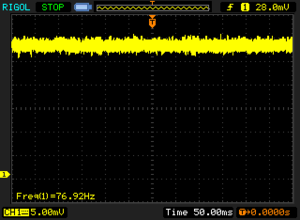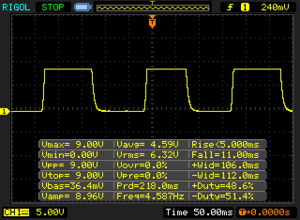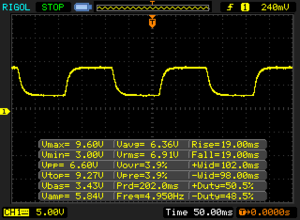Breve Análise do Smartphone Samsung Galaxy A10: Poder em plástico
Os Top 10
» Os Top 10 Portáteis Multimídia
» Os Top 10 Portáteis de Jogos
» Os Top 10 Portáteis Leves para Jogos
» Os Top 10 Portáteis Acessíveis de Escritório/Empresariais
» Os Top 10 Portáteis Premium de Escritório/Empresariais
» Os Top 10 dos Portáteis Workstation
» Os Top 10 Subportáteis
» Os Top 10 Ultrabooks
» Os Top 10 Conversíveis
» Os Top 10 Tablets
» Os Top 10 Smartphones
» A melhores Telas de Portáteis Analisadas Pela Notebookcheck
» Top 10 dos portáteis abaixo dos 500 Euros da Notebookcheck
» Top 10 dos Portáteis abaixo dos 300 Euros
| Networking | |
| iperf3 transmit AX12 | |
| Xiaomi Redmi 7 | |
| Nokia 3.2 | |
| Samsung Galaxy A10 | |
| Samsung Galaxy A20e | |
| Huawei Y6 2019 | |
| Honor 8A | |
| iperf3 receive AX12 | |
| Huawei Y6 2019 | |
| Honor 8A | |
| Samsung Galaxy A20e | |
| Samsung Galaxy A10 | |
| Xiaomi Redmi 7 | |
| Nokia 3.2 | |
| |||||||||||||||||||||||||
iluminação: 90 %
iluminação com acumulador: 451 cd/m²
Contraste: 2050:1 (Preto: 0.22 cd/m²)
ΔE Color 5.44 | 0.5-29.43 Ø4.87
ΔE Greyscale 7.8 | 0.5-98 Ø5.1
90% sRGB (Calman 2D)
Gamma: 2.206
| Samsung Galaxy A10 IPS, 1520x720, 6.2" | Samsung Galaxy A20e IPS, 1560x720, 5.8" | Honor 8A IPS, 1520x720, 6.1" | Xiaomi Redmi 7 IPS, 1520x720, 6.3" | Huawei Y6 2019 IPS LCD, 1560x720, 6.1" | Nokia 3.2 IPS, 1520x720, 6.3" | |
|---|---|---|---|---|---|---|
| Screen | -16% | -7% | -6% | 2% | -22% | |
| Brightness middle | 451 | 475 5% | 522 16% | 444 -2% | 487 8% | 415 -8% |
| Brightness | 430 | 473 10% | 542 26% | 441 3% | 485 13% | 391 -9% |
| Brightness Distribution | 90 | 93 3% | 94 4% | 90 0% | 89 -1% | 86 -4% |
| Black Level * | 0.22 | 0.35 -59% | 0.47 -114% | 0.45 -105% | 0.35 -59% | 0.55 -150% |
| Contrast | 2050 | 1357 -34% | 1111 -46% | 987 -52% | 1391 -32% | 755 -63% |
| Colorchecker dE 2000 * | 5.44 | 6.8 -25% | 4 26% | 3.94 28% | 4.3 21% | 4.8 12% |
| Colorchecker dE 2000 max. * | 11.94 | 13.4 -12% | 9.5 20% | 6.72 44% | 10.1 15% | 9.51 20% |
| Greyscale dE 2000 * | 7.8 | 8.7 -12% | 6.6 15% | 4.8 38% | 4.1 47% | 5.7 27% |
| Gamma | 2.206 100% | 2.33 94% | 2.28 96% | 2.294 96% | 2.09 105% | 2.255 98% |
| CCT | 9149 71% | 9385 69% | 7258 90% | 7445 87% | 7312 89% | 7824 83% |
* ... menor é melhor
Cintilação da tela / PWM (modulação por largura de pulso)
| Tela tremeluzindo/PWM detectado | 77 Hz | ≤ 10 % configuração de brilho | |
A luz de fundo da tela pisca em 77 Hz (pior caso, por exemplo, utilizando PWM) Cintilação detectada em uma configuração de brilho de 10 % e abaixo. Não deve haver cintilação ou PWM acima desta configuração de brilho. A frequência de 77 Hz é muito baixa, portanto a oscilação pode causar fadiga ocular e dores de cabeça após uso prolongado. [pwm_comparison] Em comparação: 53 % de todos os dispositivos testados não usam PWM para escurecer a tela. Se PWM foi detectado, uma média de 8492 (mínimo: 5 - máximo: 343500) Hz foi medida. | |||
Exibir tempos de resposta
| ↔ Tempo de resposta preto para branco | ||
|---|---|---|
| 16 ms ... ascensão ↗ e queda ↘ combinadas | ↗ 5 ms ascensão | |
| ↘ 11 ms queda | ||
| A tela mostra boas taxas de resposta em nossos testes, mas pode ser muito lenta para jogadores competitivos. Em comparação, todos os dispositivos testados variam de 0.1 (mínimo) a 240 (máximo) ms. » 34 % de todos os dispositivos são melhores. Isso significa que o tempo de resposta medido é melhor que a média de todos os dispositivos testados (20.7 ms). | ||
| ↔ Tempo de resposta 50% cinza a 80% cinza | ||
| 38 ms ... ascensão ↗ e queda ↘ combinadas | ↗ 19 ms ascensão | |
| ↘ 19 ms queda | ||
| A tela mostra taxas de resposta lentas em nossos testes e será insatisfatória para os jogadores. Em comparação, todos os dispositivos testados variam de 0.165 (mínimo) a 636 (máximo) ms. » 52 % de todos os dispositivos são melhores. Isso significa que o tempo de resposta medido é pior que a média de todos os dispositivos testados (32.5 ms). | ||
| PCMark for Android | |
| Work performance score (classificar por valor) | |
| Samsung Galaxy A10 | |
| Samsung Galaxy A20e | |
| Honor 8A | |
| Xiaomi Redmi 7 | |
| Huawei Y6 2019 | |
| Nokia 3.2 | |
| Média Samsung Exynos 7884B (6316 - 6902, n=3) | |
| Work 2.0 performance score (classificar por valor) | |
| Samsung Galaxy A10 | |
| Samsung Galaxy A20e | |
| Honor 8A | |
| Xiaomi Redmi 7 | |
| Huawei Y6 2019 | |
| Nokia 3.2 | |
| Média Samsung Exynos 7884B (5136 - 5309, n=3) | |
| AnTuTu v7 - Total Score (classificar por valor) | |
| Samsung Galaxy A10 | |
| Samsung Galaxy A20e | |
| Honor 8A | |
| Xiaomi Redmi 7 | |
| Huawei Y6 2019 | |
| Nokia 3.2 | |
| Média Samsung Exynos 7884B (89089 - 102121, n=3) | |
| Jetstream 2 - 2.0 Total Score | |
| Média da turma Smartphone (13.8 - 387, n=171, últimos 2 anos) | |
| Xiaomi Redmi 7 (Chrome 73) | |
| Samsung Galaxy A10 (Chrome 76) | |
| Média Samsung Exynos 7884B (21.5 - 23.4, n=3) | |
| Samsung Galaxy A20e (Chrome 72.0.3626.121) | |
| Huawei Y6 2019 | |
| Nokia 3.2 (Chrome 75) | |
| Honor 8A | |
| Speedometer 2.0 - Result | |
| Média da turma Smartphone (15.2 - 569, n=151, últimos 2 anos) | |
| Xiaomi Redmi 7 (Chome 73) | |
| Samsung Galaxy A20e (Chrome 72.0.3626.121) | |
| Média Samsung Exynos 7884B (20.7 - 22.2, n=3) | |
| Samsung Galaxy A10 (Chome 76) | |
| Huawei Y6 2019 (Chrome) | |
| Nokia 3.2 (Chome 75) | |
| Honor 8A (Chrome) | |
| WebXPRT 3 - Overall | |
| Média da turma Smartphone (38 - 347, n=76, últimos 2 anos) | |
| Xiaomi Redmi 7 (Chrome 73) | |
| Samsung Galaxy A20e (Chrome 72.0.3626.121) | |
| Média Samsung Exynos 7884B (45 - 48, n=3) | |
| Samsung Galaxy A10 (Chrome 76) | |
| Nokia 3.2 (Chrome 75) | |
| Huawei Y6 2019 | |
| Honor 8A (Chrome) | |
| Octane V2 - Total Score | |
| Média da turma Smartphone (2228 - 100368, n=211, últimos 2 anos) | |
| Xiaomi Redmi 7 (Chrome 73) | |
| Samsung Galaxy A20e (Chrome 72.0.3626.121) | |
| Média Samsung Exynos 7884B (6921 - 7470, n=3) | |
| Samsung Galaxy A10 (Chrome 76) | |
| Huawei Y6 2019 (Chrome) | |
| Nokia 3.2 (Chrome 75) | |
| Honor 8A (Chrome) | |
| Mozilla Kraken 1.1 - Total | |
| Honor 8A (Chrome) | |
| Nokia 3.2 (Chrome 75) | |
| Huawei Y6 2019 | |
| Samsung Galaxy A10 (Chrome 76) | |
| Média Samsung Exynos 7884B (5546 - 5917, n=3) | |
| Samsung Galaxy A20e (Chrome 72.0.3626.121) | |
| Xiaomi Redmi 7 (Chrome 73) | |
| Média da turma Smartphone (277 - 28190, n=171, últimos 2 anos) | |
* ... menor é melhor
| Samsung Galaxy A10 | Samsung Galaxy A20e | Honor 8A | Xiaomi Redmi 7 | Huawei Y6 2019 | Nokia 3.2 | Média 32 GB eMMC Flash | Média da turma Smartphone | |
|---|---|---|---|---|---|---|---|---|
| AndroBench 3-5 | 2% | -2% | -0% | 2% | -1% | -3% | 1184% | |
| Sequential Read 256KB | 296.4 | 300.4 1% | 265 -11% | 298 1% | 279.3 -6% | 282.4 -5% | 242 ? -18% | 2032 ? 586% |
| Sequential Write 256KB | 101.7 | 103.6 2% | 104 2% | 84.7 -17% | 107.8 6% | 106.3 5% | 100.5 ? -1% | 1648 ? 1520% |
| Random Read 4KB | 73.4 | 79.8 9% | 61 -17% | 73.6 0% | 69 -6% | 35 -52% | 43.1 ? -41% | 282 ? 284% |
| Random Write 4KB | 13.3 | 13.18 -1% | 15 13% | 14.4 8% | 15 13% | 17.5 32% | 22.3 ? 68% | 325 ? 2344% |
| Sequential Read 256KB SDCard | 78.8 ? | 79.2 ? 1% | 81.9 4% | 85.9 ? 9% | 83.2 ? 6% | 87.2 ? 11% | 71.8 ? -9% | |
| Sequential Write 256KB SDCard | 65.3 ? | 64.3 ? -2% | 61.8 -5% | 63.3 ? -3% | 64.4 ? -1% | 65.7 ? 1% | 52.9 ? -19% |
(+) A temperatura máxima no lado superior é 38.7 °C / 102 F, em comparação com a média de 35.1 °C / 95 F , variando de 21.9 a 63.7 °C para a classe Smartphone.
(+) A parte inferior aquece até um máximo de 38.7 °C / 102 F, em comparação com a média de 33.9 °C / 93 F
(+) Em uso inativo, a temperatura média para o lado superior é 28.7 °C / 84 F, em comparação com a média do dispositivo de 32.8 °C / ### class_avg_f### F.
Samsung Galaxy A10 análise de áudio
(+) | os alto-falantes podem tocar relativamente alto (###valor### dB)
Graves 100 - 315Hz
(-) | quase nenhum baixo - em média 75.4% menor que a mediana
(+) | o baixo é linear (0% delta para a frequência anterior)
Médios 400 - 2.000 Hz
(-) | quase nenhum médio - em média 75.4% menor que a mediana
(+) | médios são lineares (0% delta para frequência anterior)
Altos 2 - 16 kHz
(-) | quase nenhum máximo - em média 75.4% menor que a mediana
(+) | os máximos são lineares (0% delta da frequência anterior)
Geral 100 - 16.000 Hz
(-) | o som geral não é linear (123.3% diferença em relação à mediana)
Comparado com a mesma classe
» 91% de todos os dispositivos testados nesta classe foram melhores, 7% semelhantes, 1% piores
» O melhor teve um delta de 12%, a média foi 36%, o pior foi 134%
Comparado com todos os dispositivos testados
» 97% de todos os dispositivos testados foram melhores, 2% semelhantes, 0% piores
» O melhor teve um delta de 4%, a média foi 24%, o pior foi 134%
Samsung Galaxy A20e análise de áudio
(±) | o volume do alto-falante é médio, mas bom (###valor### dB)
Graves 100 - 315Hz
(-) | quase nenhum baixo - em média 27.1% menor que a mediana
(±) | a linearidade dos graves é média (9.4% delta para a frequência anterior)
Médios 400 - 2.000 Hz
(±) | médios reduzidos - em média 5.8% menor que a mediana
(+) | médios são lineares (5.4% delta para frequência anterior)
Altos 2 - 16 kHz
(±) | máximos mais altos - em média 5.7% maior que a mediana
(+) | os máximos são lineares (2.5% delta da frequência anterior)
Geral 100 - 16.000 Hz
(±) | a linearidade do som geral é média (24% diferença em relação à mediana)
Comparado com a mesma classe
» 52% de todos os dispositivos testados nesta classe foram melhores, 9% semelhantes, 39% piores
» O melhor teve um delta de 12%, a média foi 36%, o pior foi 134%
Comparado com todos os dispositivos testados
» 70% de todos os dispositivos testados foram melhores, 7% semelhantes, 23% piores
» O melhor teve um delta de 4%, a média foi 24%, o pior foi 134%
| desligado | |
| Ocioso | |
| Carga |
|
Key:
min: | |
| Samsung Galaxy A10 3400 mAh | Samsung Galaxy A20e 3000 mAh | Honor 8A 3020 mAh | Xiaomi Redmi 7 4000 mAh | Huawei Y6 2019 3020 mAh | Nokia 3.2 4000 mAh | Média Samsung Exynos 7884B | Média da turma Smartphone | |
|---|---|---|---|---|---|---|---|---|
| Power Consumption | 22% | -4% | -2% | 17% | -15% | 13% | -19% | |
| Idle Minimum * | 0.7 | 0.66 6% | 0.73 -4% | 1 -43% | 0.59 16% | 1 -43% | 0.67 ? 4% | 0.876 ? -25% |
| Idle Average * | 1.6 | 1.63 -2% | 2.07 -29% | 1.7 -6% | 1.94 -21% | 1.9 -19% | 1.617 ? -1% | 1.441 ? 10% |
| Idle Maximum * | 2 | 1.67 16% | 2.14 -7% | 2.1 -5% | 1.96 2% | 2.8 -40% | 1.777 ? 11% | 1.585 ? 21% |
| Load Average * | 5.4 | 2.77 49% | 4.3 20% | 3.3 39% | 2.82 48% | 4 26% | 3.73 ? 31% | 6.95 ? -29% |
| Load Maximum * | 6 | 3.66 39% | 5.96 1% | 5.6 7% | 3.57 40% | 5.8 3% | 4.67 ? 22% | 10.4 ? -73% |
* ... menor é melhor
| Samsung Galaxy A10 3400 mAh | Samsung Galaxy A20e 3000 mAh | Honor 8A 3020 mAh | Xiaomi Redmi 7 4000 mAh | Huawei Y6 2019 3020 mAh | Nokia 3.2 4000 mAh | |
|---|---|---|---|---|---|---|
| Duração da bateria | -6% | 11% | 6% | -4% | 27% | |
| Reader / Idle | 1489 | 1432 -4% | 1489 0% | |||
| H.264 | 802 | 753 -6% | 917 14% | 902 12% | 805 0% | |
| WiFi v1.3 | 753 | 715 -5% | 829 10% | 848 13% | 732 -3% | 958 27% |
| Load | 276 | 250 -9% | 301 9% | 268 -3% | 249 -10% |
Pro
Contra
A Samsung tomou decisões estranhas no passado quando se trata de quais recursos exclui de seus smartphones baratos. O Galaxy A10 é um exemplo disso, sem um sensor de brilho, bússola, LED de notificação e leito digitais. Outros smartphones de menos de US$ 200 têm pelo menos alguns desses recursos, o que torna o Galaxy A10 um dispositivo ainda mais complicado de se recomendar às pessoas.
Essas omissões são lamentáveis, pois dificultam o que, de outra forma, seria um smartphone decente. A Samsung colocou muita potência pelo dinheiro, com o Galaxy A10 sendo capaz de rodar alguns jogos modernos a 60 FPS. Nossa unidade de teste também gerencia bem suas temperaturas, enquanto sua única câmera traseira também tira fotos decentes. Da mesma forma, ele possui um módulo GPS razoavelmente preciso e uma tela rica em contraste. Além disso, é raro ver um smartphone econômico com o Android 9.0 Pie.
O Galaxy A10 oferece muita potência pelo dinheiro, mas a Samsung comprometeu-se em muitas áreas para que possamos recomendá-lo.
Em última análise, o Galaxy A10 é um smartphone de orçamento sólido, se você pode ignorar a estranha tomada de decisão da Samsung. No entanto, a falta de recursos básicos, como o brilho automático e um sensor de digitais, pode fazer com que muitas pessoas procurem outra coisa.
Samsung Galaxy A10
- 10/31/2019 v7 (old)
Florian Schmitt


































